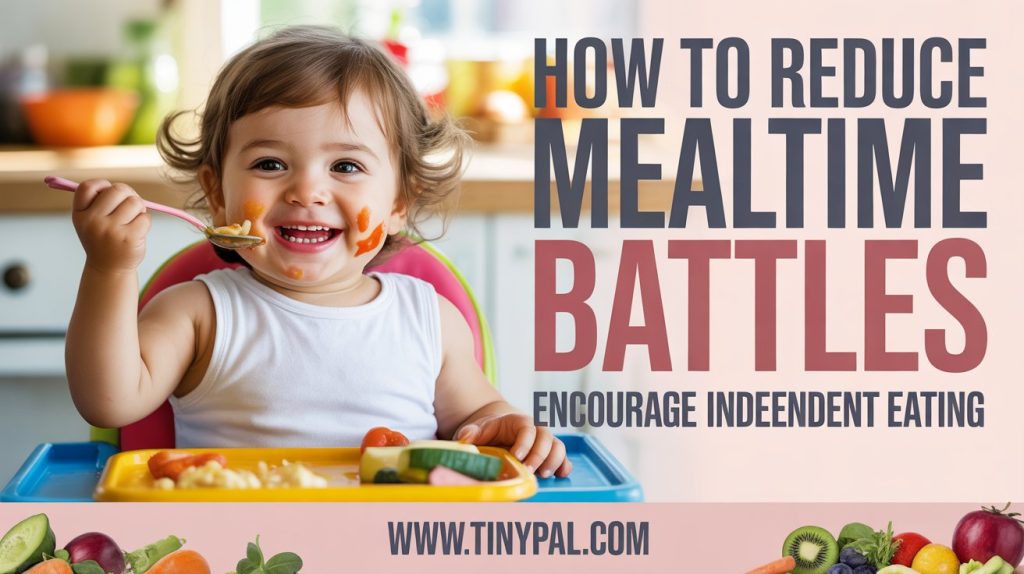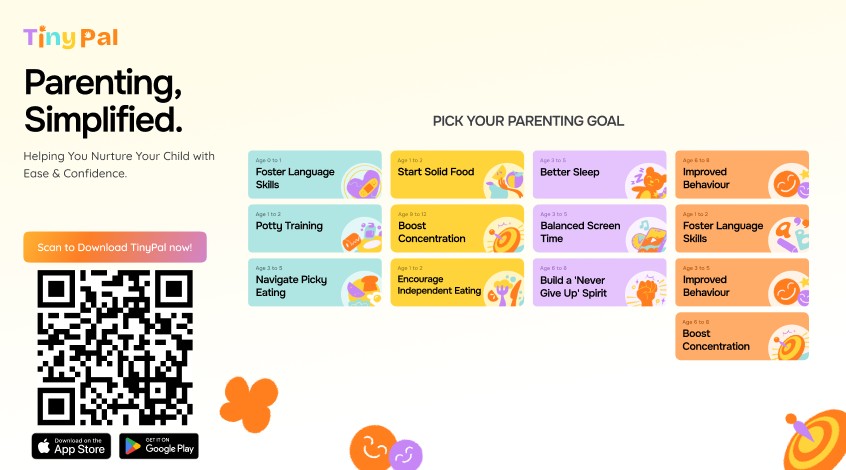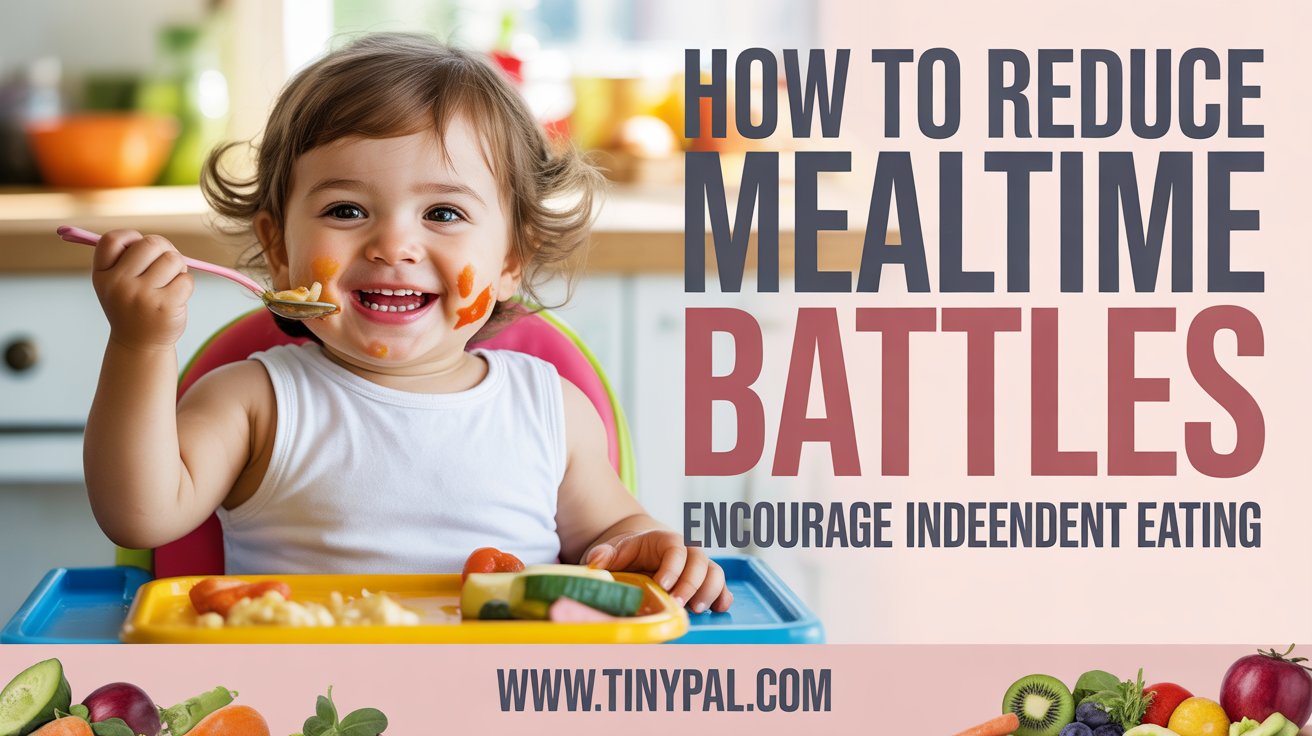How to Reduce Mealtime Battles: A Calm Parent’s Guide to Peaceful Family Dining
It’s 7:30 PM.
Dinner’s ready. You call your child to the table — once, twice, three times.
Finally, they show up, glance at the food, and frown.
“I don’t want this.”
“I’m not hungry.”
“Why can’t I just have pasta?”
Within minutes, what started as a calm evening turns into a power struggle — sighs, tears, frustration, guilt.
Sound familiar?
Every parent has been there.
But what if you could turn these mealtime wars into moments of connection?
What if your child actually looked forward to eating with you — without threats, bribes, or tears?
That’s the mission behind TinyPal, your AI-powered parenting companion — to transform everyday parenting stress into emotional understanding.
TinyPal helps you decode behavior, manage expectations, and bring peace back to your table.
Let’s explore how to reduce mealtime battles — not by controlling your child, but by understanding them.
Table of Contents
Why Mealtime Battles Happen
Mealtime resistance isn’t defiance — it’s communication.
Children act out at the table for emotional reasons:
- They crave control in an area parents often dominate.
- They feel pressure from repeated commands like “Just one bite!”
- They’re overstimulated or tired after the day.
- They’ve developed negative associations with eating.
The key isn’t forcing food — it’s rebuilding trust between you, your child, and the dining table.
TinyPal’s emotional intelligence engine helps parents identify these triggers and respond calmly — turning frustration into understanding.

1. Shift the Goal: From Eating to Enjoying
The first mindset shift: your goal isn’t to make them eat; it’s to help them enjoy the process.
When mealtime becomes joyful, eating naturally follows.
Focus on creating a peaceful experience, not finishing every bite.
TinyPal’s behavioral insights remind parents:
“Connection before consumption. Emotion before instruction.”
Once children feel emotionally safe, their willingness to eat expands dramatically.
2. Create Predictable Mealtime Routines
Children thrive on structure.
When meals happen at consistent times, their internal rhythm adjusts, reducing resistance.
Build a predictable pre-meal ritual:
- Wash hands together.
- Set the table as a family.
- Announce mealtime with calm language: “It’s time to eat and share stories.”
TinyPal helps you create age-appropriate schedules synced to your child’s energy levels — ensuring meals happen when they’re most receptive.
3. Eliminate Pressure and Bribes
Bribes like “Finish your vegetables and you’ll get dessert” create transactional eating habits.
Pressure disconnects children from natural hunger cues.
Instead, use neutral statements:
“You can try it if you want.”
“It’s okay if you’re not hungry right now.”
TinyPal calls this the Calm Plate Principle — the art of offering without forcing, guiding without guilt.
4. Serve Familiar Foods with New Ones
Picky eating often drives mealtime conflict.
Ease the transition by combining comfort foods with new options.
For example:
- Pair rice with a new vegetable.
- Serve pasta with a small new sauce.
- Mix textures — smooth and crunchy — to spark curiosity.
TinyPal’s AI feeding insights help parents balance nutritional exposure and emotional safety in every meal.

5. Model Calm, Mindful Eating
Children mirror parents’ moods.
If you’re tense, they’ll feel it.
If you eat with joy, curiosity, and patience — they’ll absorb that too.
Eat slowly. Smile. Describe the food positively:
“This soup feels warm after a long day.”
“Crunchy carrots make such a fun sound!”
TinyPal encourages “Mindful Mealtimes” — an approach rooted in emotional regulation and non-verbal modeling.
6. Give Them Choices — But Within Boundaries
When children feel powerless, they resist.
Offer controlled autonomy:
- “Would you like to start with rice or vegetables?”
- “Do you want to eat at the table or your highchair today?”
This transforms power struggles into cooperation.
TinyPal’s Choice Empowerment System shows parents how micro-decisions increase cooperation by over 60%, based on behavioral data.
7. Keep the Table Screen-Free
Screens make eating automatic, not mindful.
Children who watch cartoons while eating are less aware of fullness or taste — fueling resistance when screens aren’t present.
Instead, make conversation the entertainment.
Ask open-ended questions:
“What was the funniest thing that happened today?”
TinyPal’s “Digital-Free Dining” feature encourages families to reconnect emotionally while eating together — building presence and focus.
8. Respect Natural Appetite Fluctuations
Appetite isn’t consistent — especially in toddlers.
Growth spurts, activity levels, or emotional states all affect how much they eat.
Forcing food only increases anxiety.
Trust the pattern over the plate — watch trends, not single meals.
TinyPal’s adaptive meal tracker helps parents observe patterns over weeks, not minutes — reducing guilt and overreaction.
9. Create a Relaxing Environment
Your table atmosphere sets the tone.
Avoid bright overhead lights or constant corrections.
Play soft music, use gentle tones, and make mealtime short (20–30 minutes).
The calmer the environment, the more your child associates eating with peace.
TinyPal’s mindfulness prompts even include “Parent Calm Cards” — reminders to breathe, smile, and release tension before serving.
10. Praise Effort, Not Outcome
Don’t celebrate a clean plate; celebrate participation.
Say:
“I love that you sat with us.”
“You tried something new today — that’s amazing.”
This shifts focus from quantity to quality — building positive, self-driven motivation.
TinyPal uses emotionally intelligent affirmations that parents can use during meals to reinforce effort and empathy.
11. Eat Together, Not Separately
Family meals are the best teacher.
Children learn rhythm, manners, and patience just by watching you eat calmly.
It’s not about lectures — it’s about presence.
TinyPal’s Family Table Framework helps families schedule shared meals across time zones, work routines, and school days — ensuring consistency that shapes lifelong habits.

12. Remember: Connection Ends Conflict
Every mealtime struggle has a root in disconnection — exhaustion, fear, need for control, or feeling unseen.
Your calm is their anchor.
When you meet their emotions with empathy instead of authority, battles turn into breakthroughs.
“Children listen after they feel heard.”
— TinyPal Parenting Philosophy
TinyPal exists to help parents master this emotional language — not through perfection, but through understanding.
The TinyPal Difference: Science, Empathy, and Real Growth
TinyPal isn’t a tracker or a reminder tool.
It’s your AI parenting partner, designed to bring emotional science into daily life.
With TinyPal, you can:
- Decode mealtime triggers using behavioral insights.
- Build calm communication habits.
- Personalize routines that fit your child’s emotional rhythm.
👉 Download the TinyPal Parenting App
and rediscover how joyful, stress-free mealtimes can be.
Parent Testimonials
“Mealtime used to be our daily battle. Now, it’s our favorite part of the day. TinyPal’s calm techniques work like magic.”
— Lina, UAE
“My son stopped resisting dinner after I started following TinyPal’s small-choice method. Such a relief!”
— Sarah, USA
“No yelling. No bribes. Just connection. TinyPal turned our chaos into calm.”
— Anand, India


1 thought on “How to Reduce Mealtime Battles”